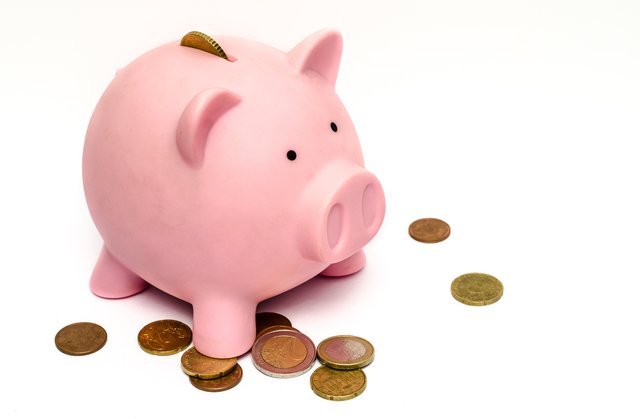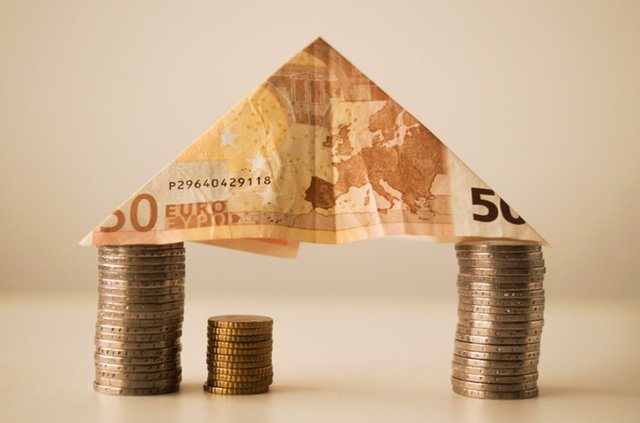Personal Finance Tips (Pt. 3)
This is the 3rd and last part of my Personal Finance series, in the past articles we've talked about overcoming debt:
https://Steemit.com/money/@profitgenerator/personal-finance-tips-pt-1
And minimizing household costs:
https://Steemit.com/money/@profitgenerator/personal-finance-tips-pt-2
In this part we will talk about maximizing profits and income and how to take advantage of the market when investing.
4) Maximize Investment Profit
Whether you run a small business, do personal investments or just try investing as a hobby, maximizing profits is the key to be efficient. Why take only half of the profits when you can take more or all of them?
You can only earn consistent profits if you found a positive expected value investment, and if you have found it, if you don't utilize efficiently you leave most of the profits on the table. It's like eating half of a meal, and leaving the other half for others to eat, why, when you can eat it all?
When you get out of an investment, it's always crucial to examine the situation of the market. If the risk profile of the market hasn't changed, then it's no reason to get out of an investment early. In my opinion people should only get out of an investment when the risk profile has changed, some news came out, something has changed in that market that has elevated the risk, and we do not wish to expose ourselves any longer to that.
Now if you run a percentage portfolio, then you can just allocate a % of your capital to a specific market based on it's risk/reward structure, as the risk goes up, you decrease the % allocated to that market, proportionally. If you know that company X will make 50% less profit next month, then its intelligent to decrease your investment by 50% in that market.
We go for profit, and we invest for profit, but risk should never be ignored. When we go for a cryptocurrency, we must examine the growth rate of it, and the potential demand, if we can estimate a good % increase it membership and trading volume, then it's logical to stay in that market. However when we know that the risk profile has changed (technical: hardfork, 51% attack ; economical: people not interested ; legal: more regulations), then it is time to get out of that.
Nobody wants to be the last bagholder, so for a market to function, there will always have to be a buyer tomorrow, and if your risk is increasing (any risk), then that is a signal to get out.
However do not cut the profits short, some people are emotional and want the quick buck, that is the opposite of this. You see a 5% profit and want to get out quickly to spend that money, that is foolish, because you might have made 50% profit if you'd have stayed longer.
So in my opinion, you should only exit an investment when the risk profile has changed and increased, and not for some emotional get-rich-quick adrenaline effect, you will never get rich that way. Be disciplined, sacrifice short term small profit for long term big profit.
Your risk profile should be:
RISK PROFILE = REWARD%/RISK% , where the reward is measured in potential % profit (which is the demand/supply structure of that market), and risk is measured in % market volatility, in other words: variance.
Depending how this is changed you can allocate more % of your capital, or less % of your capital to that investment. But a general rule of thumb is to not invest more than 1-2% of your capital in 1 market, and the investments in your portfolio should not be correlated, perhaps more on this in a next article where I will talk about portfolios, just keep this in mind for now, the smaller % of your wealth you risk, the better you will sleep at night.
5) Compound Interest
Compound interest is really the exciting part of investing, because if you know or estimate the % profit you are going to make, and the payment frequency, then you can extrapolate that nicely and estimate your future returns.
It is a very simple concept, the percentages stack up over time, a nice mathematical property and they magnify the original value that was subjected to it.
For example:
100$ with 1% interest paid daily in 1000 days will become: 2,095,915.56 $
See how powerful it is?
We can apply that to Steemit:
If you get paid 1$ on your articles, and increase that by only 3% every day, then in 365 days you will get 48,482.72$/article
So you only need to know the amount of increase or let's call it interest, and the periodicity of the interest applied, and you can calculate the future profits in the next X amount of days (or hours or minutes or other any other units)
The formula is:
FUTURE_CAPITAL = INITIAL_CAPITAL x (1+ INTEREST_RATE/100) ^ TIME_UNIT
So for the Steemit example that calculates:
FUTURE_CAPITAL = 1$ x (1+ 3/100) ^ 365 = 1$ x 1.03 ^ 365 = 48,482.72$
The time unit can be any unit, but then make sure you use the same unit anywhere. Since Steemit pays in 24 hours, we can only calculate daily profits here. It is true that if it would pay in a more frequent rate like every hour, we could make more profits, but that would put too much burden on the blockchain.
So that is how you calculate your compound interest, not just for Steemit profits, but for all investments, bank savings, etc.




Great! It is indeed very informative...
Thanks I try to do my best to create interesting content. Let me know what other interesting topics you want me to write about.